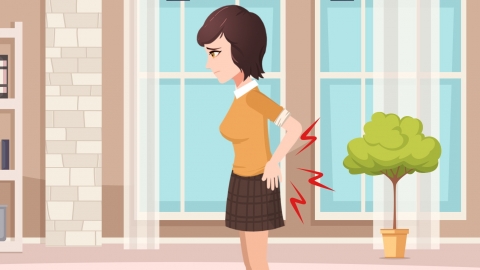How to relieve lower back pain and soreness
Lower back pain may be caused by prolonged sitting or standing, overexertion, lumbar muscle strain, lumbar disc herniation, rheumatoid arthritis, and other conditions. It can be improved through posture adjustment, rest, and medication. If the pain progressively worsens or is accompanied by limb numbness or restricted movement, prompt medical attention is necessary.
1. Prolonged sitting or standing: Maintaining the same posture for extended periods causes continuous tension in the lower back muscles and poor blood circulation, leading to soreness and discomfort. It is recommended to stand up and move every 30 minutes, perform simple lower back stretches, use a supportive chair, and maintain proper sitting and standing postures.
2. Overexertion: Frequent bending, lifting heavy objects, or intense physical activity can cause lumbar muscle strain and result in aching pain. Immediate rest is advised, along with avoiding further heavy lifting. Applying heat to the lower back can improve blood circulation and relieve muscle tension.

3. Lumbar muscle strain: Chronic injury due to long-term overuse or improper posture of the lower back leads to dull, persistent pain that worsens with exertion. Under medical guidance, medications such as diclofenac sodium sustained-release tablets, flurbiprofen gel patches, and eperisone hydrochloride tablets may be used to alleviate symptoms.
4. Lumbar disc herniation: Degeneration and protrusion of the intervertebral disc compresses nerve roots, causing lower back pain along with leg numbness and pain. Under medical supervision, medications such as celecoxib capsules, mecobalamin tablets, and mannitol injection may be used to manage symptoms.
5. Rheumatoid arthritis: Autoimmune abnormalities affecting spinal joints lead to joint inflammation, resulting in lower back pain accompanied by morning stiffness and joint swelling. Follow medical advice to use medications such as ibuprofen sustained-release capsules, methotrexate tablets, and leflunomide tablets to improve symptoms.
Daily care should include avoiding prolonged sitting or standing and overexertion, performing appropriate back and core muscle exercises, keeping the lower back warm, choosing a mattress of moderate firmness, and maintaining a regular sleep schedule to support lower back health.





